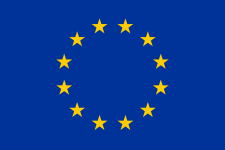The data published by the European Automobile Manufacturers’ Association (ACEA) reveals a significant increase in the registrations of new electric vehicles (EVs) in the European Union (EU) during July.
However, in response to this development, the association warns that the “massive efforts” from China are “putting Europe’s competitiveness as a natural home for manufacturing industries at stake”.
This “concern” stems from two primary reasons.
The first is related to Asian brands and cars rapidly entering the European EV market.
“The formidable maturity that Chinese car manufacturing has achieved, combined with a drive to expand beyond the domestic market, explains the decision to seek a foothold in Europe, with the next step being overseas manufacturing,” explained Sigrid de Vries, ACEA’s Director General.
Furthermore, the competitive advantage of the Asian giant and its cost-effective imports “could chip away at European auto makers’ domestic market share, ultimately impacting local activity.”
The second reason relates to the EU’s lack of a “solid strategy.”
“Europe lacks a robust and coherent approach to the increasingly tough competition from abroad, supported by governments that marry their green and digital transitions with national resilience in a combative and decisive way,” de Vries said.
“Propped up by public money and government intent, it is no secret that China’s auto industry now mounts a challenge to the auto industry in Europe and beyond, and it appears China’s strategic decision to invest early and along the entire value chain is paying dividends,” she added.
Unlike the EU, the Asian giant has a strategy that encompasses the entire value chain, including mining, refining, charging network manufacturing, cheap energy, among other aspects.
In contrast, Europe has chosen “a more piecemeal approach, often setting targets first and dealing with essential framework conditions for implementation later or insufficiently,” acknowledges the CEO.
De Vries cites the Alternative Fuels Infrastructure Regulation (AFIR) as an example, “which came late and fell short of minimum needs.”
This regulation governs the number of EV charging stations that major roads forming the Trans-European Transport Network must have.
As of 2026, all EU member states must have fast-charging stations for cars, vans, and heavy electric vehicles every 60 kilometers.
Read more: Electric Grid Capacity Concerns in the Netherlands Following AFIR Approval
“The recently adopted Batteries Regulation also still leaves details unclear, adding cost and complexity to the battery supply chain in Europe,” commented the director.
“The lack of synchronization constrains the flourishing of the EV market at a moment when scaling up is crucial to meet legal objectives,” she added.
De Vries also mentioned the Critical Raw Materials Law and the Net-Zero Industry Law, considering them as two measures that would “improve the EU’s game” in different parts of the value chain. However, she believes they “still remain fragmented.”
“A truly strategic policy must address challenges more coherently to match the sizable efforts made in other regions,” she acknowledged.
EV Registrations Increased by 60.6%
In July, new battery-electric vehicle registrations in the EU substantially increased by 60.6%, reaching 115,971 units and accounting for 13.6% of the market.
Most EU markets saw significant growth with double and triple-digit percentage gains, including the two largest: Germany (+68.9%) and France (+32.4%).
Particularly, Belgium recorded the highest sales with an impressive growth of 235.9%.
Combined, battery-electric car sales saw a substantial 54.7% increase from January to July, with 819,725 units registered.
On the other hand, new registrations for hybrid-electric vehicles increased by 31.6% in July.
These were mainly driven by strong growth in the region’s largest markets: Germany (+46.6%), France (+32.8%), Spain (+30.8%), and Italy (+16.7%).
This amounted to a cumulative increase of 28.5%, with almost 1.6 million units sold between January and July, accounting for a quarter of the market share.
Last month, new plug-in hybrid car registrations in the increased by 14.5%, reaching 67,060 units.
The robust performance in key markets like the Netherlands (+107.6%), France (+80%), and Spain (+42.7%) was offset by a decline in Germany (-39.5%), the largest market for this type of fuel.
Despite this growth, the market share of plug-in hybrid cars remained steady at 7.9% in July.
The petrol car market grew by 5%, reaching 304,903 units.
However, the market share decreased from 39.3% to 35.8% compared to last July.
The growth was primarily due to strong performance in key markets, particularly France (+16.4%) and Germany (+12.5%).
In the first seven months of this year, over 2.3 million petrol cars were sold, a substantial increase of 14.3% compared to 2022.
On the other hand, the EU’s diesel car market continued to decline (-9.1% in July), despite growth in Germany (+2.7%) and the Central and Eastern European markets, especially Slovakia (+36.1%) and Romania (+19.8%).
Diesel cars now account for a market share of 14.1%, down from 17.9% in July of the previous year.









